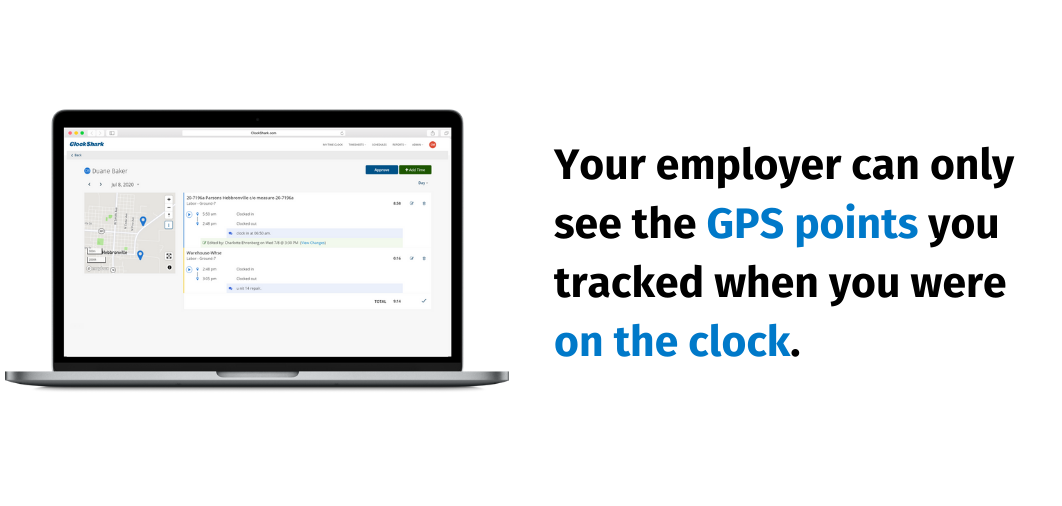What does my manager see when I’m clocked in?
Your employer can only see the GPS points you tracked when you were on the clock. To see how your location is being tracked throughout the day, select a timesheet and click on “view details” to see the map and other information.
GPS pings can be viewed as they occur and you can see it by tapping the little zigzag in the upper right corner. It will also tell you if anything went wrong with collecting the ping. What’s visible there is the same thing managers can see.

When you clock out or go on an unpaid break, ClockShark is no longer tracking the location. GPS points are recorded every 15-20 minutes throughout your shift and are displayed like a “breadcrumb trail,” showing where you were throughout the day.



